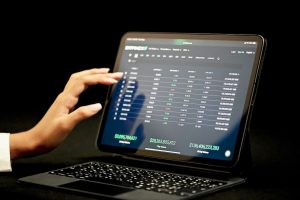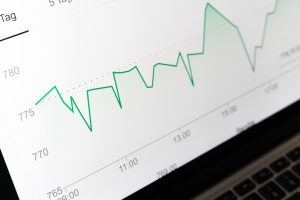Forex, or foreign exchange, is the largest financial market in the world, with a daily trading volume of over $5 trillion. It involves the buying and selling of currencies with the aim of making a profit from the fluctuations in their exchange rates. Forex trading is accessible to individuals, institutions, and businesses from all over the world, thanks to the availability of online trading platforms and brokers.
One of the key metrics that traders use to evaluate their performance in Forex trading is the ITM (in-the-money) rate. This metric measures the percentage of trades that end up being profitable. In other words, if a trader has an ITM rate of 70%, it means that out of 100 trades, 70 were profitable, while 30 resulted in a loss.
The ITM rate is an important metric for several reasons. Firstly, it provides a quick and easy way to assess a trader’s overall success rate. It allows traders to see how well they are doing in terms of making profitable trades, and whether they need to make any adjustments or improvements to their trading strategy.
Secondly, the ITM rate can be used to calculate the expected return on investment (ROI) for a particular trading strategy. If a trader has a high ITM rate, it means that they are more likely to make profits on their trades, which in turn leads to a higher ROI. Conversely, a low ITM rate indicates that a trader is making more losing trades than winning ones, resulting in a lower ROI.
Thirdly, the ITM rate can be used to manage risk. By knowing their ITM rate, traders can set realistic expectations for their trading performance and adjust their risk management strategy accordingly. For example, if a trader has a low ITM rate, they may choose to trade with smaller position sizes or use tighter stop-loss orders to limit their potential losses.
There are various factors that can affect a trader’s ITM rate, including their trading strategy, risk management approach, market conditions, and personal psychology. For example, a trader who uses a scalping strategy (i.e. making multiple trades within a short period of time) may have a higher ITM rate than a trader who uses a swing trading strategy (i.e. holding positions for several days or weeks).
Similarly, a trader who is disciplined in their risk management approach (e.g. using stop-loss orders, not risking more than a certain percentage of their account on each trade) may have a higher ITM rate than a trader who takes unnecessary risks. Market conditions can also have a significant impact on a trader’s ITM rate, as volatility and liquidity can affect the accuracy of technical analysis and the success of trading signals.
Lastly, a trader’s personal psychology can play a role in their ITM rate. Emotions such as fear, greed, and overconfidence can lead to impulsive and irrational trading decisions, which can result in losses. A trader who is able to maintain a calm and disciplined mindset, stick to their trading plan, and avoid emotional biases is more likely to have a higher ITM rate.
In conclusion, the ITM rate is a useful metric for Forex traders to evaluate their trading performance, manage risk, and calculate ROI. However, it should be used in conjunction with other metrics and factors, such as win-loss ratios, average profits and losses, and overall profitability. By understanding and tracking their ITM rate, traders can gain valuable insights into their trading strategy and make informed decisions to improve their performance over time.





